
“Eisenhower: This Piece of Ground + Magen Am Building Strength From Within
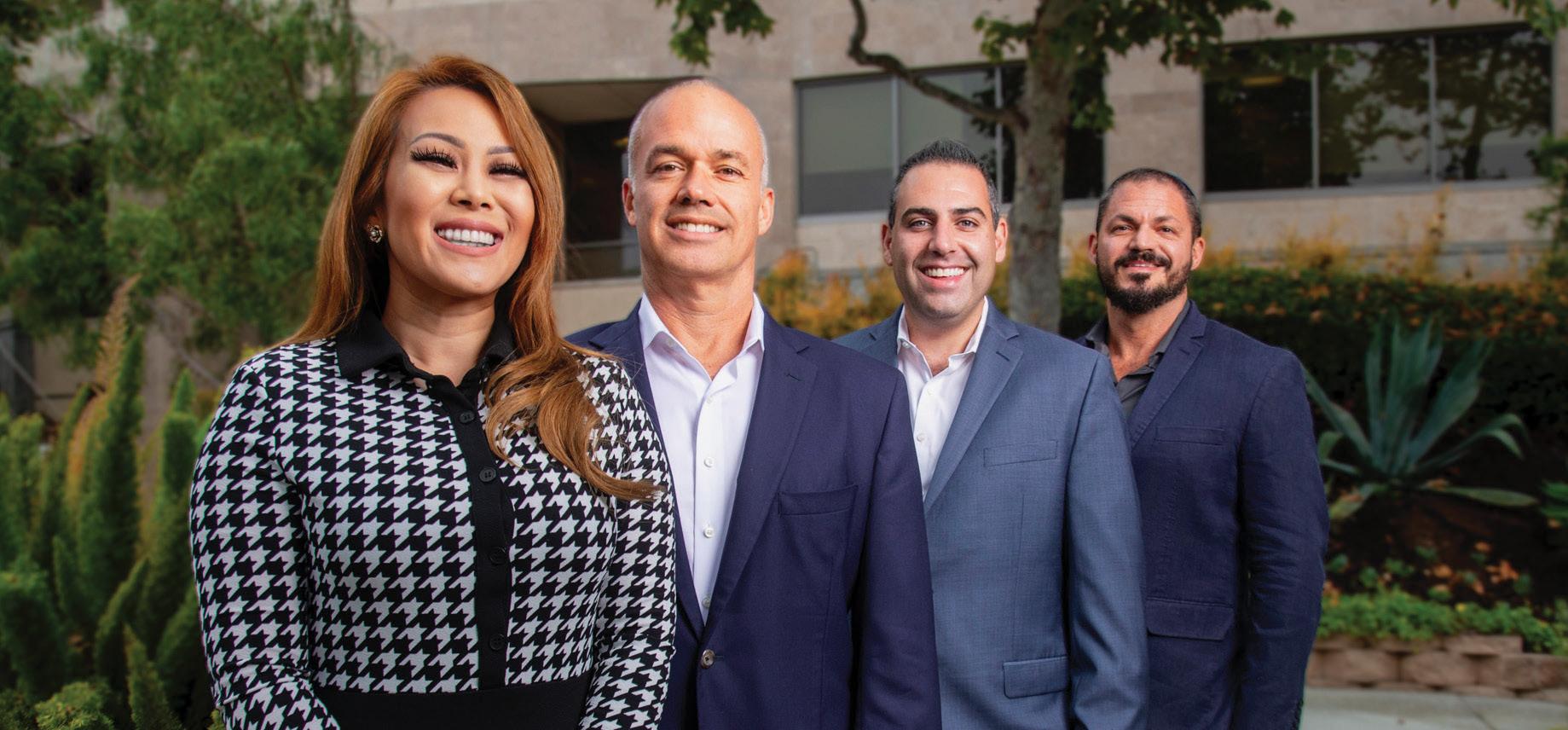

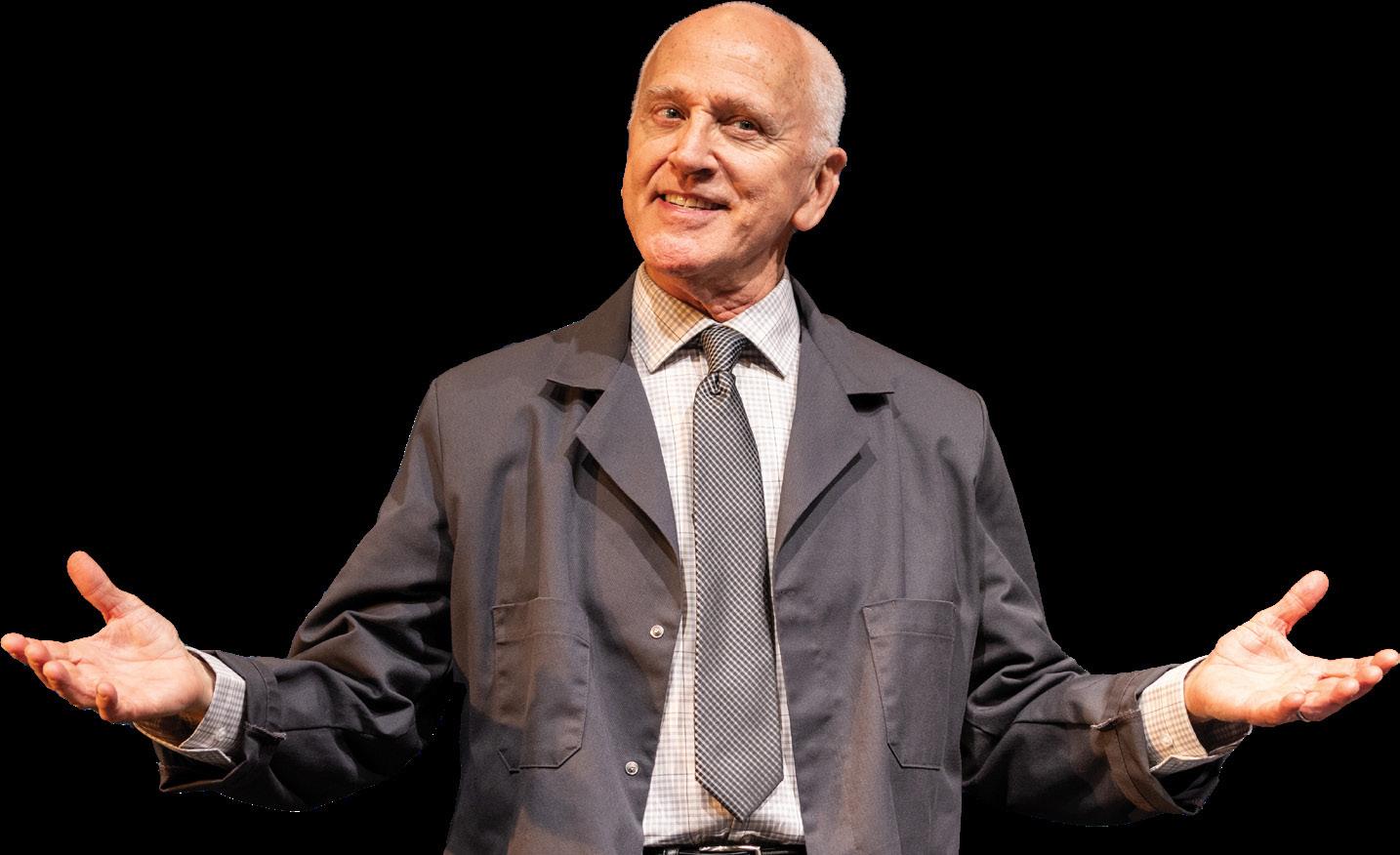

Chabad
Centers o Dieg
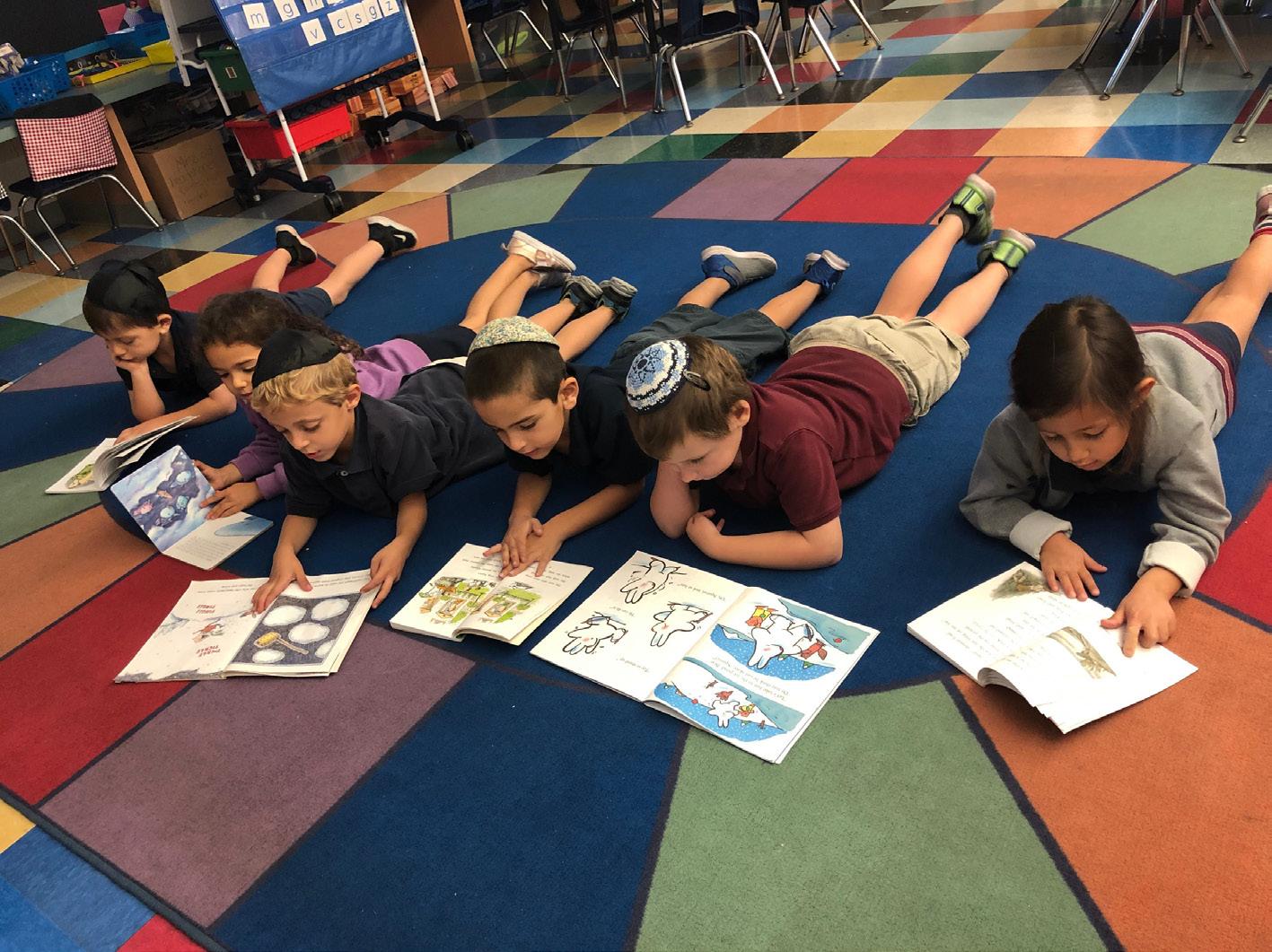
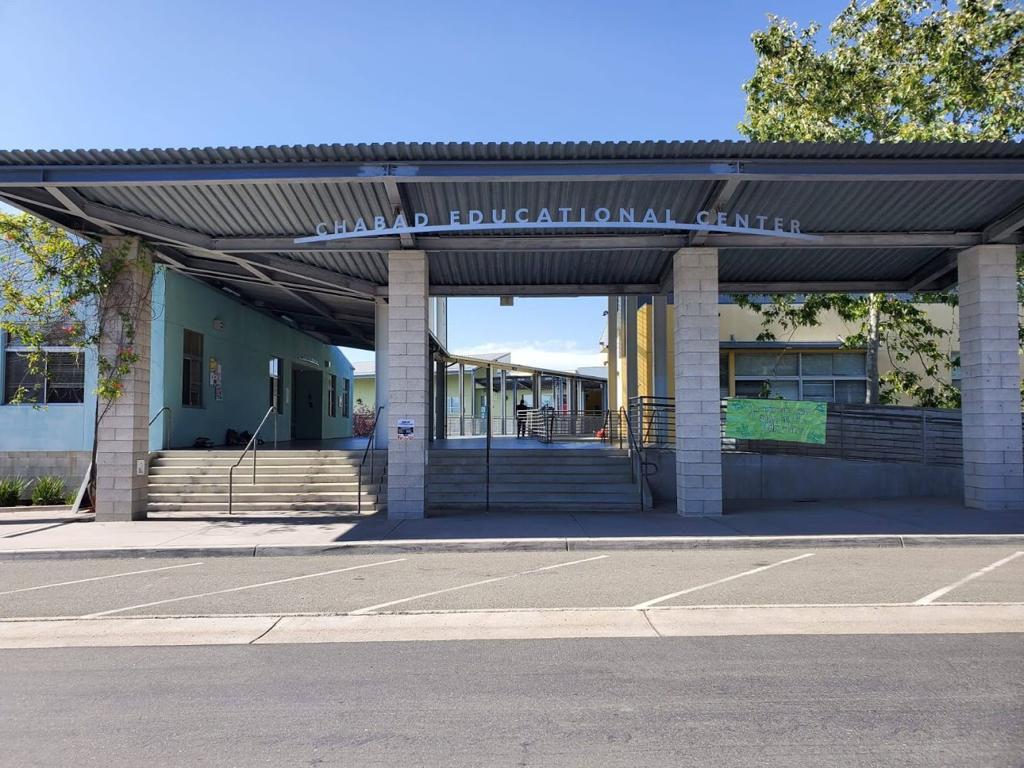
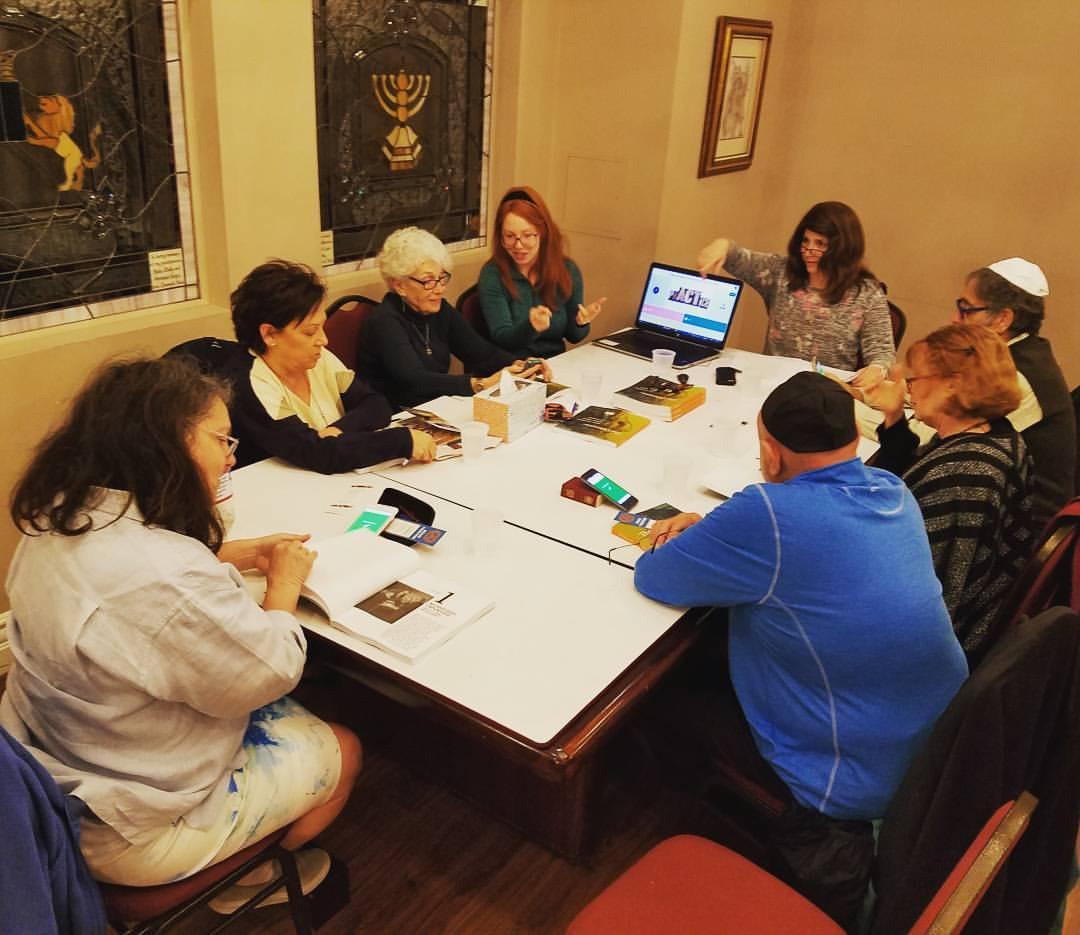


“Eisenhower: This Piece of Ground + Magen Am Building Strength From Within




Centers o Dieg



Babies/Kids
Mommy and Me. Hebrew School. C-Kids. Shabbat Programs. Winter Camp.
Teens
Bar/Bat Mitzvah Lessons, C-Teen. JLI Teens. Community Service.
Adults
Torah Portion. Chassidic Philosophy. Kabbalah. Hebrew Reading. JLI. Talmud. We're ALWAYS here for
We have locations all over San Diego! Scripps Ranch (Chabad S. Diego HQ), Bonita, Carlsbad North, Carmel Valley, Chula Vista, Coronado, Downtown, East County, Encinitas, Escondido, La Costa, La Jolla, North County Inland, North Park, Oceanside/Vista, Pacific Beach, Penasquitos, Rancho S. Fe, SDSU, Tierra Santa, UCSD, University City Find your Local Chabad Center and
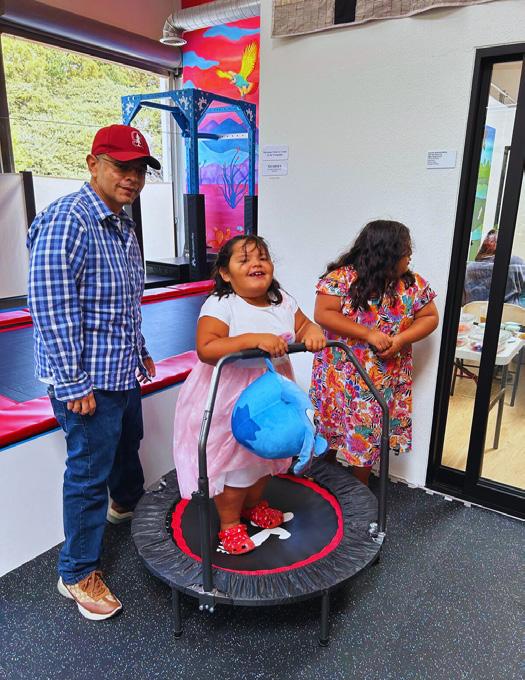















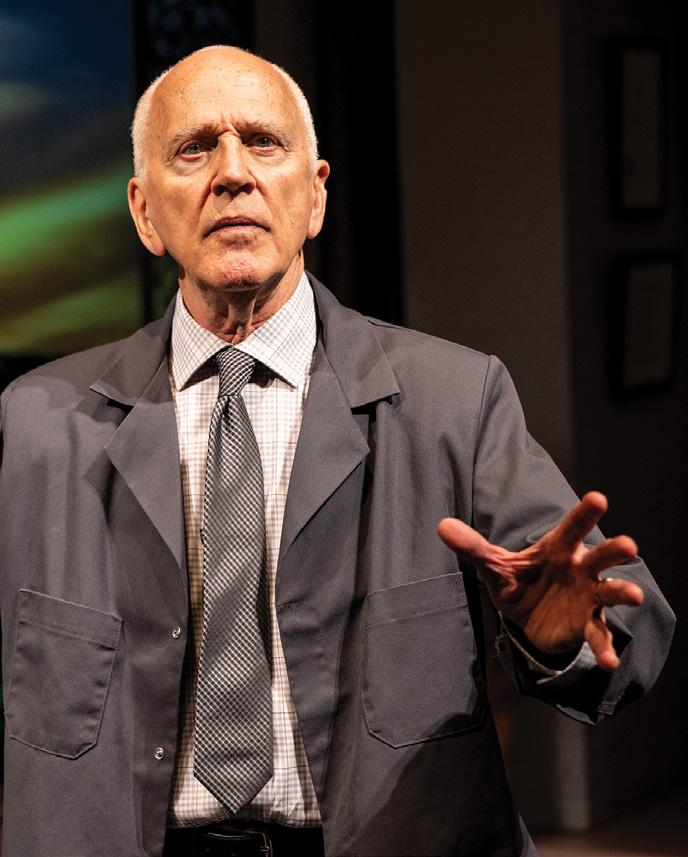


PUBLISHERS
Mark Edelstein and Dr. Mark Moss
EDITOR
Susan Edelstein
ASSISTANT EDITOR
Makayla Hoppe
CREATIVE DIRECTOR
Donna D’Angelo
ARTS & ENTERTAINMENT EDITOR
Eileen Sondak
CONTRIBUTING WRITERS
Emily Bartell, Linda Bennett, Andrea Simantov, Trevor James McNeil, Marnie Macauley, Rabbi Yeruchem Eilfort, Galia Miller Sprung, Micah Siva Lisa McGuigan
CONTRIBUTING ILLUSTRATOR
Pepe Fainberg
ADVERTISING REPRESENTATIVES
Alan Moss | Palm Springs
EDITORIAL editor@sdjewishjournal.com
ADVERTISING marke@sdjewishjournal.com
CIRCULATION & SUBSCRIPTIONS ronniew@sdjewishjournal.com
ART DEPARTMENT art@sdjewishjournal.com
LISTINGS & CALENDAR assistant@sdjewishjournal.com
SDJJ is published monthly by San Diego Jewish Journal, LLC. Subscription rate is $24 for one year (12 issues). Send subscription requests to SDJJ, 122 15th Street, PO Box 421, Del Mar Ca 92014. The San Diego Jewish Journal is a free and open forum for the expression of opinions. The opinions expressed herein are solely the opinion of the author and in no way reflect the opinions of the publishers, staff or advertisers. The San Diego Jewish Journal is not responsible for the accuracy of any and all information within advertisements. The San Diego Jewish Journal reserves the right to edit all submitted materials, including press releases, letters to the editor, articles and calendar listings for brevity and clarity. The Journal is not legally responsible for the accuracy of calendar or directory listings, nor is it responsible for possible postponements, cancellations or changes in venue. Manuscripts, letters, documents and photographs sent to the Journal become the physical property of the publication, which is not responsible for the return or loss of such material. All contents ©2025 by San Diego Jewish Journal. The San Diego Jewish Journal is a member of the American Jewish Press Association and the Jewish Telegraphic Agency. San Diego Jewish Journal (858) 442 9922 #SDJewishJournal SanDiegoJewishJournal sdjewishjournal.com



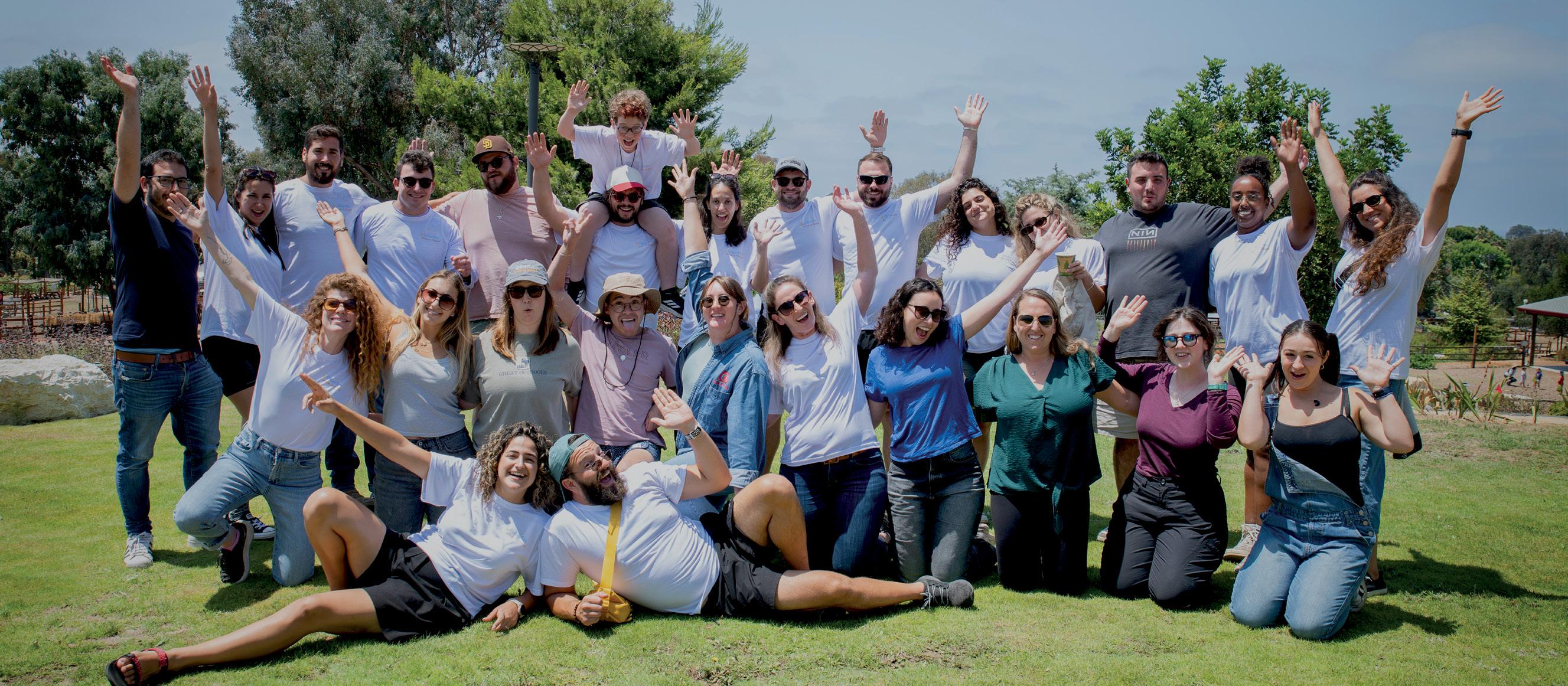



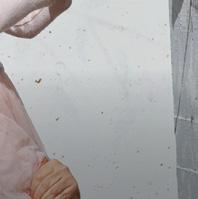

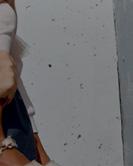

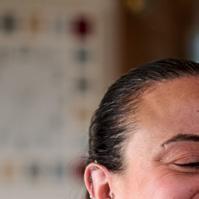




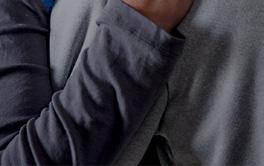





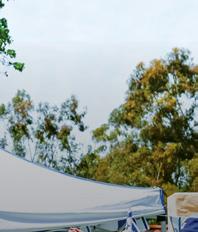


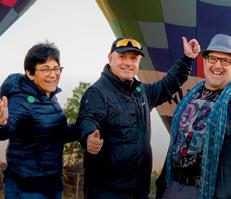



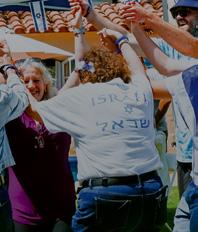




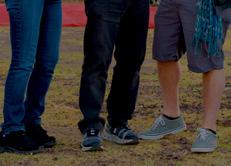


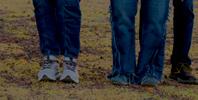

Medical misadventures, Jewish wit and real-life storytelling in one hilarious evening of stand up.
Dr. Maisel knows the heart inside and out. For decades, the former cardiologist treated the sickest patients at the VA hospital, pioneered a lifesaving diagnostic test (now used worldwide), and lectured on five continents. He also knows laughter is powerful medicine.
In a comedic coming-of-age story, Maisel draws on a life of outrageous experiences, from growing up as one of the only Jewish kids in rural Michigan (I was basically a ‘Jewnicorn’), to pounding on a first-class passenger’s chest during “Fifty Shades of Gray,” to wrestling racists in medical school, to sewing up a postpartum episiotomy a little too complete.
With the timing of a seasoned comic and the warmth of a doctor who’s seen it all, Maisel’s performance pulses with rhythm, sharp punch lines and call backs that keep audiences roaring from start to finish. The result is a fast-paced night of stand up that is equal parts heart and hilarity.
Ample free parking kacklez.com/am or scan for tickets NOV 24 @ 7:30PM ONE NIGHT ONLY!




or visit https://www.msmfamilylaw.com/attorneys/myra-chack-fleischer/
SUSAN EDELSTEIN
It is November which has Thanksgiving, an American holiday since 1863 when Abraham Lincoln proclaimed a national Thanksgiving Day. Thinking about a country-wide day to give thanks in the middle of the Civil War tells a lot about Lincoln himself, and he made as sure as he could that we would observe, as a nation, a day devoted to giving thanks. How did he know we would need that?
Thanks, Abe.
In this issue you will read about North Coast Repertory Theatre’s show about another president, Dwight Eisenhower, told through the eyes of the acclaimed actor, John Rubinstein. We are also featuring Magen Am, a reassuring presence in Jewish communities. Please be sure to read our regular contributors, they are amazing, every one.
Now, let’s let others express some gratitude. Happy Thanksgiving. A
Small cheer and great welcome Makes a merry feast.
— William Shakespeare
After a good dinner one can forgive Anybody, even one’s own relations.
— Oscar Wilde
When I started counting my blessings, My whole life turned around.
— Willie Nelson
Gratitude is the sign of noble souls.
— Aesop
Acknowledging the good that Is already in your life is The foundation for all abundance.
— Eckhart Tolle
Thankfulness is the quickest path to joy.
— Jefferson Bethke
Gratitude paints little smiley faces On everything it touches.
— Richelle E. Goodrich
As we express our gratitude, we Must never forget that the highest Appreciation is not to utter words, But to live by them.
— John F. Kennedy
BY LINDA BENNETT & EMILY BARTELL

On Aug. 20, the San Diego Center for Jewish Culture held The Gotthelf Art Gallery Opening Celebration of “(RE)Defining Zionism: Portraits and Perspectives From a Post Oct. 7 Israel — Photographs and Conversations” by Shlomit Levy Bard. Launched in the wake of Oct. 7, 2023, and the global rise in antisemitism, “(RE)Defining Zionism” uses photography and personal interviews with people from diverse backgrounds across Israel, including from religious, secular and political divides, to create an intimate portrait. A truly engaging exhibit, some of those we connected with while exploring the exhibit were Jane Willowghly, Ingrahm Losner, Jane Zeer, Howard Naftalin, Renee Barnow, Tema and David Halpern, Barbara and Paul Insel, Judy Friedman, Bobbi and Steve Laufer, Herb Hein, Jack Cohen, Jackie and David Gmach, Tammy Vener, Yvonne Lazar, Marsha Berkson, Clarice Gelfman, Fran Forman, Rona Dosick, Hedy Dalin, Ruth Levy (mother of artist), Ovi Bard (son of artist), Hariva and Daniel Levenson, Rabbi Scott and Jennifer Meltzer, and Melanie Rubin
Congregation Beth El hosted the San Diego Jewish Men’s Choir’s Carnegie Hall Preview Concert of their program, “Jewbilation! 28 Years of Brotherly Love,” on Aug. 24. This SDJMC program will debut at Carnegie Hall on Feb. 14, 2026, as part of the Distinguished Artists International New York 2026 season. We thoroughly enjoyed the evening.
Under the musical direction of Ruth Weber, the SDJMC performed songs in various languages including English, Hebrew, Ladino and Yiddish. Some of those enjoying the concert along with us were Beth Peisic, Judy and Fred Sheinbein, Linda Levine, Laurielynn Barnett, Ronnie Udoff, Stephanie and Milton Krasner, Judy and Harvey Amster, Sarita and Sammy Zands, Barbara Meis, and Bonnie and Laurie Baron
We attended the Erev Sukkot Under the Stars dinner and service at Temple EmanuEl and it was so exciting to see special guest speaker, Rabbi Paul Citrin. He presented “Healing our Land, Healing our People,” an introduction to Nature Israel (naturalisrael.org), the American branch of the Society to Protect Nature in Israel. This also gave us all a chance to meet and welcome Jessica Lewis, Nature Israel Director of Marketing and Communications, to town.
Rabbi Paul Citrin is a retired Reform rabbi, author and teacher who has focused his career on congregational life, education, social justice and interfaith dialogue. Rabbi Citrin has written and edited several books and cofounded the Jewish-Catholic Dialogue of Albuquerque. With the big, beautiful full moon shining down brightly, some of those we were delighted to run into were Jack Luchans, Sheryl Klein, Claire and Natalie Fritz, Rebecca Bierman, Nancy Marcus, Lane and Steven Mashal, Barbara Chancy, Barbi and David Graham, Nick and Randy Silverstein, Lydia and Ron Krasner, Janet Arkin, Kerrie Aiello, and Melody Jirkovsky (age 1-1/2 years).
Esther Nussbaum celebrating her 97th birthday.
Sandy Schneider celebrating her 92nd birthday.
with infinite love & happiness, Mazel Tov to…
Vicky and Steven Klug, 52 years.
Norma and Werner Dreifuss, 71 years.



by Andrea Simantov | andreasimantov@gmail.com
Following the massacre of Oct. 7, 2023, I made a vow that, unless life circumstances dictated otherwise, I would never again leave Israel over the holiday of Simchat Torah. This was the day on the Jewish calendar that barbarians unleashed unprecedented savagery on our beleaguered citizenry. This vow was a result of my visiting with family in Maryland on that fateful morning. Despite my most valiant efforts, it would take more than a week and thousands of evaporated shekels to finally return home.
Desperate to return to Israel, I slept on airport floors all over Europe and North Africa, trying to inch my way closer and closer to Ben Gurion. Consequently, I was never able to wrap my head around the days that followed the slaughter. Indeed, I felt ashamed that I had, somehow, been exempt from the abject state of paralysis that Israel experienced while they raced to inter 1,200 butchered men, women and babies. I would learn later about the silence that came after the screams of 251 kidnapped innocents faded, leaving behind a fleshstrewn and blood-soaked vista.
Two years later, instead of setting the holiday table, ironing festive clothing and baking a last batch of round challahs, we were glued to television sets and computer screens, watching the last living 20 hostages emerge from the bowels of Hamas-Hell, a spectacle that was so miraculous that it bordered on the unbelievable. But we had to believe

it because we had prayed for it. For years, I had a poster hanging in my office stating, simply, “Expect a Miracle,” but over time it became merely ‘wall art.’ As the clock ticked closer and closer to the time for lighting candles and shutting down all electronic equipment, we still remained glued to the snippets of joyous, tear-soaked reunions. The cameras cut to the riotous crowds thronging about Kikar HaChatufim — Hostage Square — outside the Tel Aviv Museum of Art, some of whom were detaching their yellow hostage pins and removing the ubiquitous ‘Bring Them Home’ dog tags. Joy appeared unbridled and complete. But I could not stop thinking about the parents of the soldiers who paid with limbs, visible and invisible injuries, and death. Imas and Abbas who surreptitiously watch their outwardly brave children, trying not to cloy but remaining ever vigilant for signs of
depression and suicidal ideation. It is all too much. So while the country was dancing in the streets, crying tears of relief and uttering the phrase, “The war has ended,” I sensed a pervasive loneliness for the families of our IDF heroes. We are a compassionate people and, certainly, we know exactly where to place our thanks; for some, however, glee remains elusive.
I cannot take off my pin just yet. Despite a reprieve and a chance to celebrate, Hamas does what Hamas does. In the last 24 hours, in lieu of honoring their “promise” of disarmament, 60 people were publicly executed. These people had dared to voice the correct opinion that Gaza’s carnage lies directly at the feet of Hamas.
We are still in the early chapters of the Torah readings, the technicolor stories of Genesis that denote the birth-pangs of
continues on page 15 >>


by Trevor James McNeil tremcneil1980@gmail.com
There have long been jokes about authors and deadlines, like the famously funny line from Douglas Adams about how he loves the sound deadlines make as they go whooshing past. On the other side, there are authors like Anthony Burgess who, after a near-death experience, decided to make the most of the time he had left, writing 58 books over 37 years. Beating them both by a country mile, at least in terms of longevity and variety, is Issac Bashevis Singer, who wrote over 50 full-length works in four distinct forms— novels, short stories, children’s books and early narrative nonfiction—all while maintaining a full-time job as a journalist and columnist at a Yiddish-language newspaper.
Getting a less-than-auspicious start, Singer was born into a Jewish family in Poland in 1903, under the Polish name Icek Hersz Zynger. Too young to be drafted during World War I, he moved with his mother to a shtetl away from the main cities, which was thought to be safer. Eschewing the family business, Singer dropped out of Rabbinical school at 17, instead becoming a self-supporting Hebrew tutor before his brother helped Singer get his first job in publishing as a proofreader at the Yiddish-Language Literarishe Bleter magazine in Warsaw, where his brother was the editor.
Getting a fairly early start in writing, Singer published his first story, “In Old Age,” in 1925 when he was only 22. The story won a literary award, adding fiction writing to his toolbox of skills along with
The type to get things done, Singer was a legal American citizen by 1943, having arrived in New York only five years before.
the proofreading skills he was developing while working at the magazine. Seeing which way the wind was blowing, and rightfully spooked by the news from Germany in the mid-1930s, Singer left Poland in his early 30s, settling in New York’s large Jewish community. While not exactly a utopia, still facing some conflict and resistance, it was still much safer than Europe in the late 1930s. 1935 was also the year that his first novel, “Satan in Goray,” appeared. Initially serialized in the Globus literary magazine, the attention-getting title wasn’t just for sensationalism or promotion. Set in the aftermath of the 17th century Khmelnytsky pogroms, some of the more notorious massacres committed by the Cossacks in what is now Ukraine, it focused on a false
messiah called Shabbatai Zvi and the influence the cult had on the village of Goray.
Falling back on his experience at his brother’s magazine in Warsaw, Singer soon found a day job as a journalist and columnist at the Yiddish-language newspaper, The Jewish Daily Forward, partly because he could barely speak a word of English when he arrived. By 1940, he had become a prolific writer, publishing not only under his much more famous “Bashevis” non de plume, but also under “Warszawski” and “D. Segal,” writing several different pieces for the newspaper per week.
The type to get things done, Singer was a legal American citizen by 1943, having arrived in New York only five years before. Five years after “Satan in Goray,” Singer wrote his next novel, “The Family Moskat,” in 1950. Written in honor of his recently deceased older brother, Israel Josuha, who had gotten him the job at Literarishe Bleter back in Warsaw, the novel was also serialized, that time in The Jewish Daily Forward, marking his evolution into a literary contributor as well as a journalist. Including controversial elements such as not just one but two instances of adultery during Yom Kippur, the Forward editor, Abraham Cahan, nearly ended the serialization before Singer was done, but readers wanted to know how the story was going to end and Singer was allowed to finish. His popularity with readers secured Singer’s place at the Forward,
becoming a people. As the weather turns colder, I’ll be warmed by memories of Simchat Torah 2025 where, dancing with other women, we draped blue and white Israeli flags over our shoulders and sang with abandon. Together our voices lifted in prayerful song, yearning for the day when we will beat our swords into plowshares and have all of our sons and daughters safely home, within the bosom of our land. A
New York-born Andrea Simantov moved to Israel 29 years ago. She is a small-business owner and both a print and media journalist. Her popular podcast, “Pull Up a Chair,” is produced by Israel News Talk Radio. She can be reached at andrea@israelnewstalkradio.com.
Literature continued
where he continued to work as a journalist while also writing short stories, which were published as the volume “Gimpel the Fool and Other Stories” in 1957.
On a fairly regular schedule, his prolific approach applying as much to his fiction as to his newspaper work, Singer’s second novel, “The Magician of Lubin,” was released in 1960. His first book not to be serialized or be a collection of previously published pieces, the novel was released in English by the Noonday imprint of Farrar, Straus and Giroux. Another work of historical fiction, the book takes place in Poland during the early Victorian period. Yasha Mazur is the titular magician who goes on various adventures around Czar-ruled Poland. The book took several gentle jabs at antisemitism in general, both in the past when the book is set, as well as in the period in which it was published. The ways and means of antisemitism and Jewish subjugation on the part of those determined to do it had not changed much since “The Merchant of Venice.”
Between the establishment of his career as a fiction author in the late 1950s and his death in 1991, Singer published 10 more adult novels, 11 short story collections, 17 children’s books and seven works of nonfiction. His efforts did not go unnoticed, and Singer was awarded an honorary doctorate from the University of Albany in 1981.
Singer died during the summer of 1991 from complications after a series of strokes when he was 97. Even death couldn’t stop him though, and there were a further four novels, two children’s books and a last piece of non-fiction, an autobiographical work titled “More Stories from My Father’s Court,” published posthumously between 1992 and 2015. A
Growing up in the far north, Trevor James McNeil had little to do other than read when the temperature went below 40 Celsius, and he developed an affinity for stories of all sorts. Graduating from the University of Victoria in 2009, he has been reading and writing in a professional capacity since. He lives in a cabin in the woods with his dog, and firmly believes The Smiths would have been better as a trio.

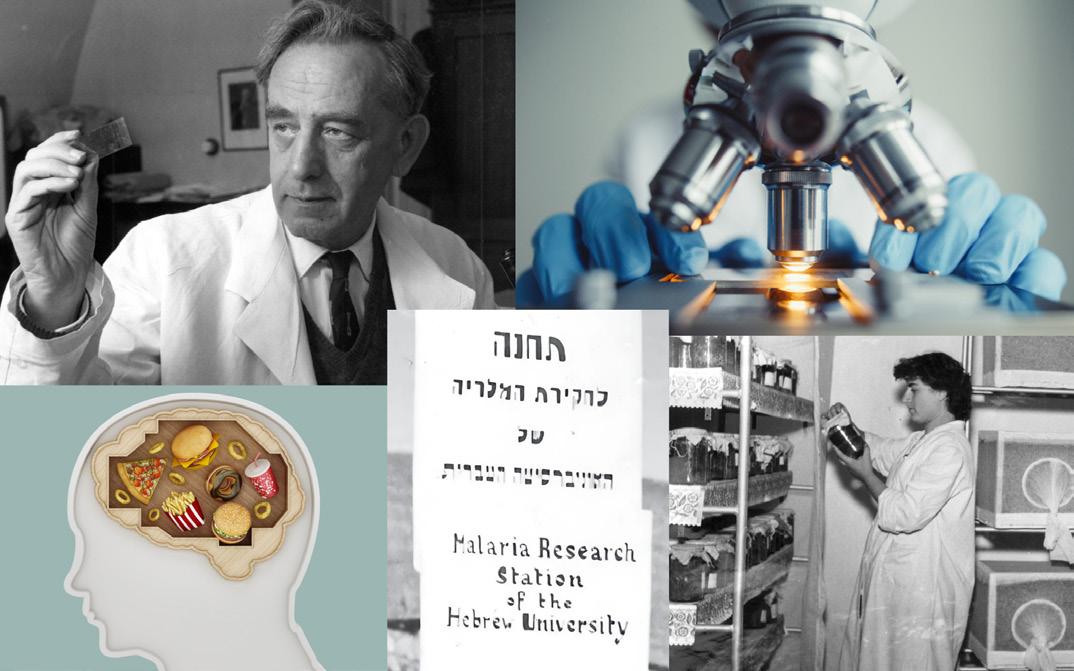
In the 1930s, Nobel Prize-winning author S.Y. Agnon wrote of a Jerusalem scientist so devoted to curing a deadly illness that he “exposed his own body to the disease and tried to cure himself with the drug he had invented… [testing] the disease and the cure personally, on his own body, and in so doing he almost died.” This fictional episode from the novel “Shira” was inspired by a very real pioneer: Professor Saul Adler.
Episode 2 of The View from Mt. Scopus, a new podcast from the Hebrew University of Jerusalem, travels from Adler’s daring experiments in pre-state Israel to modern labs where bacteria “talk” through nanotubes and hide as dormant “sleeper” cells. The journey highlights the University’s long-standing fight against disease through the voices of researchers themselves.
Born in 1895 in Belarus and raised in England, Saul Adler arrived in Jerusalem in the 1920s with a passion for Zionism and tropical medicine. He established the Hebrew University’s Institute of Microbiology and, alongside colleagues like malaria expert Prof. Israel Kligler, waged war on diseases that ravaged the region. Adler focused on leishmaniasis, a parasitic disease then nicknamed the “Jericho Rose” or “Baghdad Boil,” which caused painful skin ulcers.
Adler’s biographer, Daniel Gavron, notes that Adler quietly self-experimented with multiple diseases. “He did give himself leishmaniasis, and he gave himself various other diseases in order to research them,” Gavron says. “He was a very, very eccentric guy.” Those risks paid off in scientific knowledge, even benefiting patients in far-off India and China.
Today’s Hebrew University scientists are carrying Adler’s flame into the 21st century. One such scientist is Professor Sigal Ben-Yehuda, a microbiologist at Hebrew
University’s Faculty of Medicine, who uncovered a startling form of bacterial communication. Fifteen years ago, her team observed bacteria reaching out to one another by extending microscopic nanotubes, allowing them to transfer molecules directly from cell to cell.
The results were profound: bacteria functioned as a connected community rather than isolated individuals. What are these microbial conversations about? “We know that small molecules, like nutrients, can be delivered and exchanged between the bacteria,” says Ben-Yehuda. “But maybe even more strikingly, they can exchange antibioticresistant genes. This is a concern.”
In other words, a harmless bacterium can lend its antibiotic resistance to a pathogenic neighbor through nanotube contact—a microbial act of camaraderie that poses challenges for medicine. Ben-Yehuda’s discovery of these bacterial “conversations” has opened new paths in understanding how infections spread and survive. Listening in on bacteria can potentially point to new strategies to interrupt those exchanges and curb antibiotic resistance.
Some of the most exciting research taking place today is interdisciplinary. Professor Nathalie Balaban at the Racah Institute of Physics crossed an unlikely boundary—from physics into microbiology—to try and answer the question of why some infections refuse to die, even when the bacteria aren’t technically drug-resistant?
Balaban’s team includes physicist Dr. Orit Geffen and pediatrician Dr. Maskit Bar-Meir, bridging the gap between laboratory science and clinical medicine. Together, they are investigating bacterial “persistence”— a phenomenon where a few dormant “sleeper” cells survive antibiotic treatment and later reawaken, causing relapsing infections. Balaban approaches the problem with a physicist’s eye for fundamental questions. “The main interest of our lab is
understanding why one bacterium differs from an identical, similar bacterium, especially in their response to antibiotic treatment,” she explains. One bacterium may die under antibiotic treatment while its identical twin may survive.
In lab experiments, her team found that some bacteria essentially hit the “snooze” button, entering a reversible dormant state that isn’t caused by a genetic mutation. One cell remains active and gets killed by antibiotics, while its dormant sibling endures. “If they wake up after the antibiotic treatment ends, they will survive it,” Dr. Geffen adds. These hardy sleepers aren’t resistant in the traditional sense, but the outcome, however, is just as troubling.
Lab results don’t always predict real patients’ outcomes. That’s where Dr. Bar-Meir, a pediatric infectious disease physician, enters the picture. “The bacteria can behave differently in the body and in the lab,” Bar-Meir explains. In collaboration with her partners, she is helping develop methods to capture bacterial behavior as close to the in vivo (in-body) conditions as possible. By freezing bacteria straight from a patient’s blood, for instance, the team can examine them almost as they were inside the body.
This interdisciplinary effort—part physics, part biology, part bedside medicine—is beginning to yield insights that could inform more effective treatments. As Balaban notes, understanding how often these dormant cells appear may eventually help doctors predict and counter persistent infections.
Today’s disease threats aren’t limited to microbes. Obesity occupies its own epidemiological front. In the Department of Medical Neurobiology, Professor Yonatan Kupchik investigates contemporary pathologies like drug addiction and obesity. There are surprising connections between the two, because the obesity epidemic is driven less by metabolism than by modern reward-packed diets.
Kupchik argues that ultra-processed foods hijack the same neural circuitry as cocaine or nicotine. “Over-eating of highly palatable food is driven by the reward system, similar to the physiology we see in the brain.” Rather than labeling obesity a psychiatric disorder, Kupchik seeks to map its circuitry so treatments can target craving as well as calories. “My goal is to understand what drives overeating,” he said. “Something overrides our energetic needs, and I think that’s the reward part.”
Threading these three stories together is a common theme of scientific tenacity. Over the past century, the Hebrew University of Jerusalem has been at the forefront of battling diseases in ingenious ways. What began with a select few has evolved into collaborative, cross-disciplinary science, but the boldness and curiosity remain unchanged.
To hear more fascinating stories from Hebrew University’s past and present, tune in to The View from Mt. Scopus — the podcast bringing to life the people and ideas that continue to make this institution a beacon of knowledge and impact, for Israel and for the world.












We pride ourselves in pairing the highest quality caregivers with our clients. Our care team will work with you to develop a client-specific care plan, tailored to meet your needs. Personalized Care For Enhancing Quality Of Life
• Medication Administration Assistance
• After Surgery Care
• Respite and Relief for Caregivers


by

by Makayla Hoppe
In 2023, a new play premiered Off Broadway: “Eisenhower: This Piece of Ground.” The story follows our 34th president as he examines his life and time as a general during World War II. A one-man play, “Eisenhower” is an intimate look at his legacy on history and how his decisions shaped the future. The Off-Broadway production starred John Rubinstein, a member of the original Broadway cast of “Pippin” and a Tony Awardwinner for his portrayal of James Leeds in Mark Medoff’s “Children of a Lesser God.” John will be reprising his role as the president for the North Coast Repertory Theatre production of “Eisenhower,” playing now through Nov. 23, 2025, at their Solana Beach theater. The San Diego Jewish Journal discussed this upcoming show with John and what the play has brought to theaterlovers everywhere.
SDJJ: What drew you to this project?
John Rubinstein: This play was sent to me by the director, Peter Ellenstein, early in 2021. I had met Peter in Independence, Kansas, nine years earlier, where he was running the William Inge Festival, and I was a guest artist there one summer. While there, he had become interested in Dwight Eisenhower, did some reading and research, and decided to contact his longtime friend and great playwright, Richard Hellesen, with the idea of Richard’s writing a play about Eisenhower. Which he did. Richard felt the best way to present Ike on stage would be in a one-man play, rather than a drama with several actors playing people in his life. He wrote it, and he and Peter worked on it, and when they had a version they were satisfied with, they sent it to me.
I hadn’t seen or talked to Peter in the nine years since we’d met in Kansas. And maybe I wasn’t their first, or even their 21st, choice of which actor to send the play to; I’ll never know. But I received it, read it, admired it, but wasn’t immediately convinced that I could memorize it, or that people would want to come and see it. So although I was intrigued and curious, and extremely impressed with the
fluidity and clarity and humor and humanity in the historical depictions and detail in the writing, I wasn’t sure it could work, or that I was the man for the job. But, I accepted Peter and Richard’s invitation to meet with the two of them and read it out loud, since they had never heard it spoken. We met, I read the whole play with as much of a “performance” and commitment as I could muster with very little preparation, and when I was finished, the three of us immediately looked at each other and said, “We absolutely must do this play!”
SDJJ: How did you first approach this performance back in 2023?
JR: It was actually a bit before 2023. After that first reading in 2021, I went to New York to open in an off-Broadway production of Paul Osborn’s “Morning’s at Seven.” Peter and Richard came to the city, and the three of us held rehearsals for a couple of weeks, and worked on the play, giving it a physical shape in an imagined set as indicated in the script — the veranda of the Eisenhowers’ farmhouse in Gettysburg, Pennsylvania. And that fall of 2021, we did an invited “staged” reading of it at the theater where the Osborn play had its one night
continues on next page >>
off. I moved around the stage, with a few chairs and tables indicating that room, holding the script and reading the whole time, and delivering a more complete performance of the piece.
We worked on it some more back in California, and in March of 2022, we did a second invited staged reading in Solana Beach at North Coast Rep, where we are about to open it now. All during those months, I read more and more about Eisenhower, and worked with Peter and Richard, both very knowledgeable about his life and the history of the times around him. We changed things in the script, Richard added passages and cut others, we tried different approaches to different sections, until we felt that what we had was strong enough, and ready for prime time.
We opened the play officially in Los Angeles in the fall of 2022 with a full set and sound — and brilliant projections, designed by Joe Huppert, of various events and people that are spoken about by Ike during the play. As for my “approach,” the biggest challenge and job at hand was to memorize the 40-odd pages of single-spaced monologue, knowing I would be out there on stage all alone with no help or cues being given by other actors. A lonely prospect, and quite daunting. So the main work took place during the weeks before that LA premiere; learning the words page by page by page, until I could deliver it in one fell swoop — in as close to Eisenhower’s basic tone and rhythm as I could, from listening to him in various clips of his speeches — but also from my own memory of living through all 8 years of his presidency. I was 6 years old when he was inaugurated, and 14 when he left the White House; so he was a relatively familiar personage to me.
SDJJ: Have you added/subtracted/ changed things over the years?
JR: We did quite a number of adjustments — adding and subtracting and repositioning and even rephrasing various sections, smaller and larger,

during the weeks leading up to our opening in Los Angeles. After that, as we performed the play around the country, Richard would now and then tweak this or that, put in or take out a sentence or short paragraph here and there. But the play has remained more or less set and solid since those opening days.
That said, I did perform a 50-minute intermission-less version of the play, one that Richard abridged and adapted specially, on a cruise ship down the Seine River in France in 2024, in honor of the 80th anniversary of D-Day. The passengers saw the play with no set at all, large sections shortened or cut completely, no real props other than a cup of coffee, a glass of Scotch, and an upturned box pretending to be a reelto-reel tape recorder. No stage lights, no sound, no projections. That was a big success, which shows how compelling the actual play itself is, but I only did it that one time. Other than that, in all
our performances, the words and the set and the sound and the projections have been pretty much the same, with minor adjustments to conform with the various sizes of the actual stages.
SDJJ: What do you hope audiences get from this production?
JR: One doesn’t really want audiences to “get” any specific thing when one presents a play. Whether it’s a bedroom farce or a Shakespeare tragedy or a big musical, or a one-person historical character piece like this one, one hopes the audience understands it, enjoys it, becomes involved emotionally with it, and takes from it whatever reaches or touches them at any point or throughout the entire piece. Different individuals in an audience at the same performance will inevitably walk away having had quite unique experiences, depending on who they are, what interests them or
doesn’t, what their tastes are, and how the material specifically affects them personally.
These happen to be extremely dire, dangerous, and unprecedented times in the United States, and even in the world at large. A country we older people grew up in with a kind of postWorld-Wars confidence in its strength of government, its enduring constitutional protections, its institutions and military and justice and financial systems that were created to protect and serve the needs and welfare of all its citizens; that also used its mighty wealth and influence to better the lives of people around the globe, and give them aid and support. All of that is, at this particular period of our history, being threatened, poked and prodded, in some cases violently twisted and corrupted, and in others entirely destroyed and eliminated. So seeing a depiction of one


of our greatest presidents, and greatest wartime generals, hearing his words, and either remembering, or learning for the first time, about his humility, his intelligence, his depth of empathy for his fellow human beings, as well as the difficult challenges and decisions he was confronted with throughout his life and his military service and his two-term presidency, will certainly inform, entertain, and give an audience

by Aaron
today a great deal to think about when they leave the theater. My hope is that it will move them, inspire them, and give them — as it has given me — a deeper understanding of what leadership is all about, and of what we all have at stake as citizens of a democracy. For some it will be that; for others it might be something completely different. I mostly hope they have a wonderful time and have a whole list of things to talk about afterwards. A



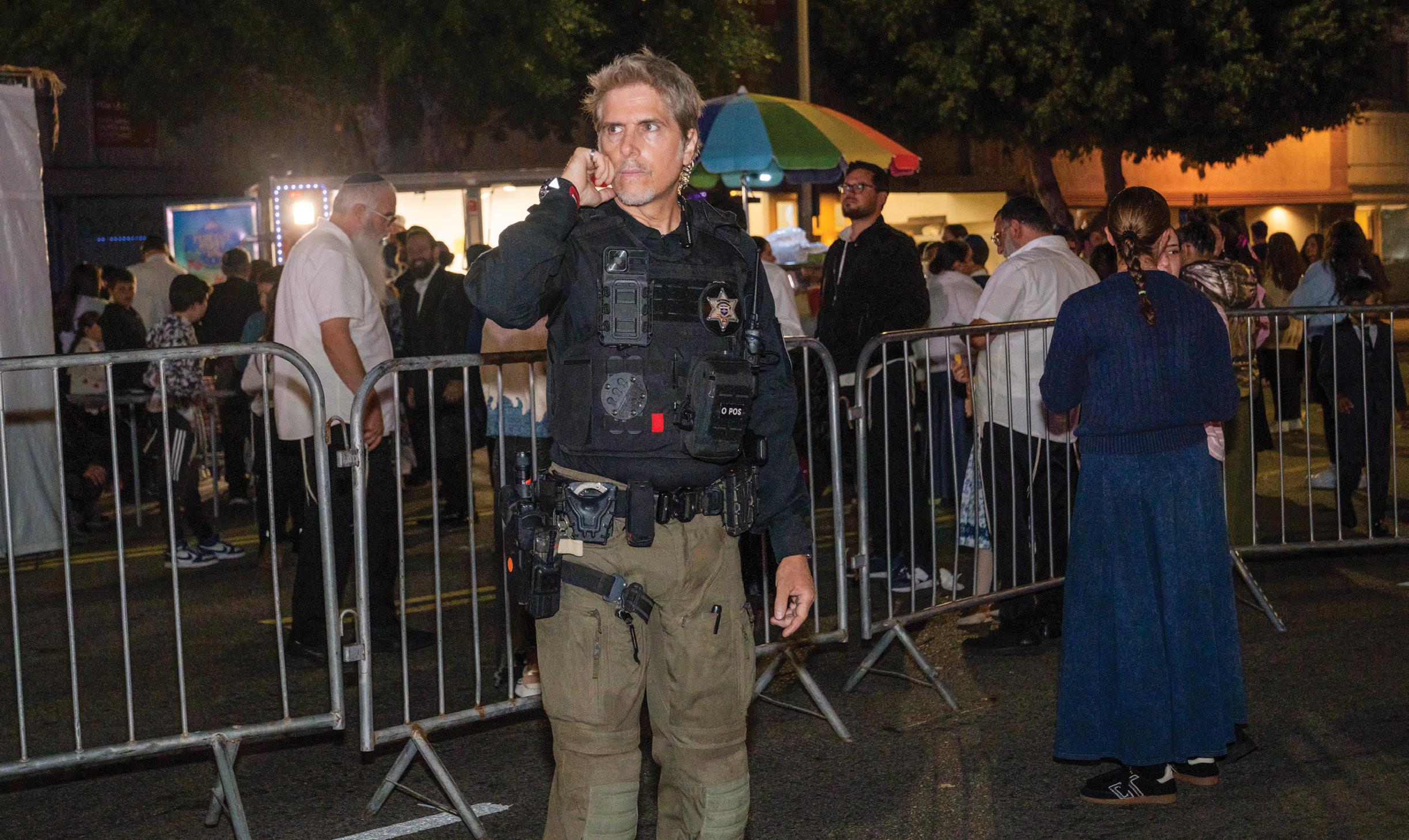
by Susan Edelstein
Even with the long-awaited release of the last 20 living hostages held since Oct. 7, 2023, and thereby an end to this excruciating war, there is continuing trepidation in the air in the U.S. around the issues of the safety and security of Jewish citizens in all the places where they may gather. Antisemitic incidents and attacks have increased dramatically throughout the country and are a major concern for all freedom-loving Americans, both Jewish and non.
Daily life happens at schools, synagogues, meetings, and events throughout neighborhoods and cities everywhere. Simply living life should
not cause concern for one’s safety. And yet today, it does. Hate crimes are at the highest levels in 20 years, and nearly 75% of religion-motivated hate crimes are directed against Jews.
An organization called Magen Am, meaning Shield of our Nation, is in the business of training volunteers to protect their own communities. This nonprofit was established in 2017 by Yossi Eilfort, an ordained Chabad rabbi and mixed martial artist. Yossi began his mixed martial arts training to promote self-defense and fitness in the Orthodox community, and in 2014, at age 22, he won a competition with a TKO. By 2017, Yossi’s two life passions, Judaism and self-defense, came together in Magen Am whose mission is “to train and empower Jewish communities so they may live and practice in peace.” This is about power in the hands of the people. About not
having to count on others for your safety. About knowing you are in good hands. Asked when he first realized the need to put the safety of Jewish communities in their own hands, Yossi said, “I was raised to believe that we are responsible for one another and to be community-oriented. I’ve long seen the need for communities, especially the Jewish community, to take proactive ownership of their safety. This isn’t just about responding to threats, it’s about building strength from within. Every community should have the tools, training and mindset to secure itself. This was never about reacting out of fear. It’s about leading with purpose, strength and readiness. We saw our model successfully work during the 2020 Los Angeles riots while operating alongside law enforcement, and that confirmed we were on the right path. From there, we focused on building the

structure to scale so that more people could be part of this mission.”
Magen Am’s flagship program is the Community Team Member Program (CTM) which involves classes in firearms proficiency, hand-to-hand combat, verbal deescalation, and situational awareness. After about 100 hours of training, the members are fully licensed, insured and equipped to patrol and guard synagogues, community events and neighborhoods. Their visible presence is a deterrent and a comfort and their vigilance is highly appreciated by the people they’re protecting.
Magen Am works with local political and law enforcement leaders to address the Jewish communities’ concerns and safety issues. They have become a part of local police stations’ emergency plans for Jewish communities with responders ready to support patrols.
This isn’t just about responding to threats, it’s about building strength from within.
Magen Am’s program has been recognized by the Secure Community Network (SCN) as a best practice in a national case study published this past September. Yossi stated, “Being recognized as a best practice is both humbling and incredibly meaningful. As a young organization, we’ve grown by listening and learning from seasoned law enforcement professionals, from our security partners, and most importantly, from the communities we serve.”
Since Oct. 7, 2023, with the increase in antisemitic incidents and crimes has come a surge in interest in Magen Am’s training classes, particularly firearms instruction. Yossi is an NRA-licensed firearms instructor and he and his highly-trained team conduct weekly, two-hour sessions at a shooting range where the volunteers learn the rules for safety, handling, aiming and shooting.
There are classes for experienced shooters, many of whom then complete the training and either form or join security teams in their area. For other attendees, it’s often the first time they’ve handled a gun; they just want to feel empowered to defend their own homes and families.
When asked how this selfempowerment affects a community, Yossi explained, “Self-empowerment has a profound and deeply positive impact on our community members. When individuals are equipped mentally, emotionally and physically, they no longer feel helpless in the face of rising threats. We see that empowered individuals carry themselves with greater confidence, optimism and a deeper sense of responsibility for themselves, their families and the wider community.”
Magen Am began in Los Angeles and has expanded into Orange County, Phoenix and now San Diego. Typically, the success and growth of a business is to be celebrated, but for Magen Am it is bittersweet. As Rabbi Yossi told the Jewish Journal (the other Jewish Journal), “We wish we weren’t needed, but we are. Our expansion is also a symbol of unity, bridging Jews across the political and observance spectrums with one shared goal: Our continued protection so that we may live in peace. It is a blessing to be in the position to do something to better secure our community.”
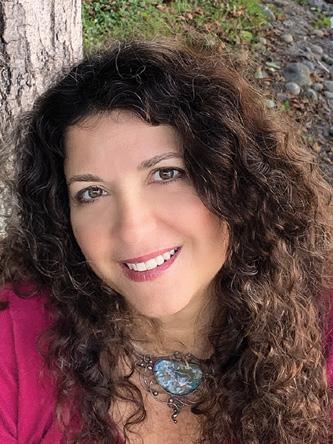
Judith Gottesman, MSW

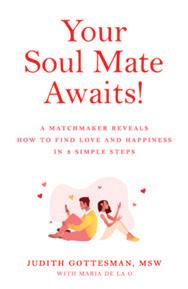
Judith’s thoughtful system is a fabulous guide, a must-read for every single!

We Are San Diego’s ONLY All-Jewish Mortuary Serving the community for over 40 years.
✡ Proudly Serving Jewish Families For Over 40 Years.
✡ Family Owned and Operated for Three Generations.
✡ Serving all Jewish Families, Orthodox, Conservative, Reform.
✡ Affiliated or Unaffiliated with a Synagogue.
✡ We can assist with At-need or Pre-need funeral planning. Purchasing cemetery plots or burial arrangements anywhere.
✡ We are here to help, call or email with any questions.
Morton Davidson – San Diego
Judith Goodman – La Jolla
Naim Begim – Palm Springs
Gail Malkus – Del Mar
Sheree Steigler – San Diego
Bruce Gellens – San Diego
Dusia Angert – San Diego
Merrell Marshall – Jamul
Zelma Brameld – La Mesa
Joan Schultz – La Jolla
Daniel Gilula – La Jolla
Alexander Bercovitz – San Diego
Anita Lawson – San Diego
Pnina Ozari – Carlsbad
Ben Dolin – La Jolla
Moselio Schaechter – San Diego
Michael Shapov – San Diego
Lilian Bendah – San Diego
Shirley Kobernick – Poway
Leonard Antick – Chula Vista
Gary Hertzberg – San Diego
Sylvia Byer – San Diego
Cherry Orly – Encinitas
Salomon Cohen – Chapultepec, MX
Sylvia Wechter – San Diego
Randall Wilkins – Escondido
Joseph Hartman – San Diego
Vicki Rosenfeld – Solana Beach
Marilyn Bierer – La Mesa

by Rabbi Yeruchem Eilfort
The past month’s Holy Days have been this Rabbi’s Garden of Eden!
The synagogue has been full to overflowing with eager congregants anxious to participate in the services. Most (if not all) listened attentively to the sermons, many of which were considerably longer than average. Even during the Yom Kippur appeal, very few bolted for the doors. (That was a joke.) We had community meals aplenty. Many were the questions asked and discussions engaged in. For those keeping count at home, try using a calculator.
But where do we go from here? When one reaches the top of Mount Everest, what’s next?
Rosh Hashanah, Yom Kippur, Sukkot, Shmini Atzeret, and Simchat Torah cumulatively are the dizzying highest point of our year. Next comes the month of Cheshvan, also known as Mar (Bitter) Cheshvan. Why ‘bitter’? Because there are no holidays!
And that, my friends, is the answer.
When we celebrate our sacred days, our holy days, our holidays, we charge our spiritual batteries. Then, through the rest of the year, we draw upon those spiritual resources to power our way through the mundane times. We don’t just survive, however. We always seek growth. We always put one foot in front of the other and keep moving forward.
We use the enormous spiritual charge and inject holiness into the otherwise secular days of the year.
In the teachings of the Kabbalists and Chasidic masters, we transform the mundane into the holy. We reveal the G-dly spark that lies hidden within all of creation. We spiritualize the physical.
This is why we are here. G-d, in His infinite kindness and wisdom, chose us to ‘partner’ with Him in perfecting the world. Can you think of a greater honor or more important mission?
It turns out that the entire purpose of the High Holidays is for us to prepare for that which comes after. He fills our proverbial cups to overflowing with His infinite divine blessings so that we can go out and share those blessings with a very thirsty world.
Think back to those moments in the synagogue when you felt inspired and enthused. Tap into that energy and then release it, transforming a dark and cold world into a place of light and warmth.
This is the divine plan: that human beings, the chosen of creation, should achieve our full potential, revealing our inner G-dliness and causing the entire, created world to ascend to its highest level.
Seize the day, week, month and year! A

by Galia Miller Sprung
It’s hard to know what to write while waiting—for the hostages, for the end of the war. For the end of Gaza— maybe. Everything can change before I hit “save.” But one date remains frozen: Oct. 7, 2023. While we wait, I want to share personal journey—a family trip to the Gaza Envelope, the Otef, two years and one day after the massacre, and just five days before the hostages were released.
I’ve written about two previous visits to the Otef, but this time, we drove through the yellow steel gates of Kibbutz Kfar Aza to family—extended family for me, but family. We followed Guy to the house where he had been living with his pregnant wife and their toddler daughter
on Oct. 7. I’d heard their story and read Guy’s initial WhatsApp family post with a short summary of how he kept the terrorists from entering the safe room, the mamad. I’ve seen two videos of what their house looked like after the fierce battle to rescue them, but to focus on Guy, his hands, his body language, his calm, as he gives a minute-by-minute account firsthand is chilling.
When the alarms went off, Guy and Ofri automatically went to the mamad where their toddler was sleeping. But this time was different. Gunfire somewhere outside. Explosions. No electricity. No communication. Then, a real miracle:
the generator kicked in. It never worked when they needed it, but on Oct. 7, it did. WhatsApp, but no phone calls. When terrorists broke into the house, Guy grabbed the lever-style mamad door handle in a tug of war for survival. For over three hours, Guy pulled the handle towards his body, which was pressed firmly against the wall to the side of the door, using that miracle of unending strength that flows through your body when you are the only barrier between terrorists and your family. The terrorists sporadically fired into the mamad door and some of the bullets penetrated the steel, missing Guy only because he’s tall and slim. Ofri and the toddler huddled in a corner away from the door. Eventually,


When the alarms went off, Guy and Ofri automatically went to the mamad where their toddler was sleeping. But this time it was different.
Guy Betser.

Guy was able to communicate with a friend via WhatsApp, who relayed information to security forces. Their situation was desperate.
The force commander asked Guy if they could fire a missile at the house to try to drive the terrorists away. Guy’s reply was shattering: “Do what you have to do. I’d rather you kill us than the terrorists.”
“Incoming in 30 seconds”
“Incoming in 30 seconds,” the commander said. After close to three hours with terrorists in the house, these 30 seconds were the longest for Guy and Ofri. They counted down. Waiting. What would happen to them? The bomb exploded near the house. The commander would not aim directly at the house. a barrage of fire from the terrorists followed. The elite force outside the house returned fire and after a 30-minute battle, two of the terrorists were killed and another two
taken prisoner, but not before grenades exploded in the living room, piercing the walls, the ceiling, cabinets, destroying the house. The soldiers quickly led Guy and his family out of the carnage, out of the kibbutz and into a reality they are still trying to understand.
Months later, I translated the interrogation of one of these terrorists into English so Ofri could use it when she was invited by Jewish communities in the States to speak about their experience. I can now picture audiences listening to firsthand testimony from a woman who was eight months pregnant at the time, with their toddler huddled next to her. No food, no bathrooms, no movement. Imagine comforting an 18-month-old child when bullets are smashing into the wall near you, and explosions and gun battles are raging. The inside of the house needed to be completely redone. We stood in the empty house whose walls are now smooth and white. No holes, no
blood stains. No dead terrorists. But then Guy points out dents in the door frame of the safe room. Permanent reminders. But a house is a structure. It is not a home. Home is your safe place. Your personal protected haven. Your intimate moments. Your children’s beds and toys. When Guy, Ofri and their daughter left their house, everything else stayed inside. Inside with the smell of explosives permeating clothes, bedding, towels. Inside where framed pictures of Guy and Ofri and the baby were displayed, couches where they sat together playing with their baby, dishes, plants, mementoes in pieces or riddled with shrapnel. Your most cherished personal space—invaded.
Before we could catch our breath and internalize Guy’s story, he was leading us to another area of the kibbutz. Now we stood near the homes of members
continues on next page >>
who had been murdered, kidnapped or miraculously survived.
“You all know the story of the X family,” Guy would start. And of course, we did. Then came the story of the Idan family—of the little Israeli-American girl, Avigail, who was in her father’s arms when he was fatally wounded.
“She ran to that house over there,” Guy points out. “They didn’t open the door, so she ran to the next house.” She was taken to Gaza. Three years old. She was released 51 days later and joined her two siblings who had hidden by their mother’s body in the shelter and were rescued.
“Where was Nira killed?” I ask, referring to a friend’s mother-inlaw. And more questions. Two of my grandchildren ask about relatives of people they knew. Later, Guy points out the area where the niece of close friends was killed; a bit of closure. No matter where you go, someone knows someone.
We reach another section, the small, attached homes of the “young generation” neighborhood. The area is roped off but our view is not blocked. A large banner with the picture of twins Ziv and Gili Berman serves as a barrier. The sign reads, “Our Gili and Zivi are still hostages in Gaza.” Each home has a large picture of the person who lived there— name in red, murdered; name is yellow; hostage in Gaza. When I saw Gili and Zivi on TV after their release from Gaza, hugging after being separated for the two years they were held by Hamas, I felt a personal relief. Tragically, the other signs will remain. Or will they?
It’s a hot topic under discussion among kibbutz members. What to do with the bullet- holed, burned, grenadedamaged attached homes. Leave them as a memorial? Raze them and build a different memorial? New homes? Too soon to decide.
We continued to the grassy central area near the education center where the little children used to run around freely. Now it’s the battleground where some of their fathers, relatives or family friends were murdered trying to reach
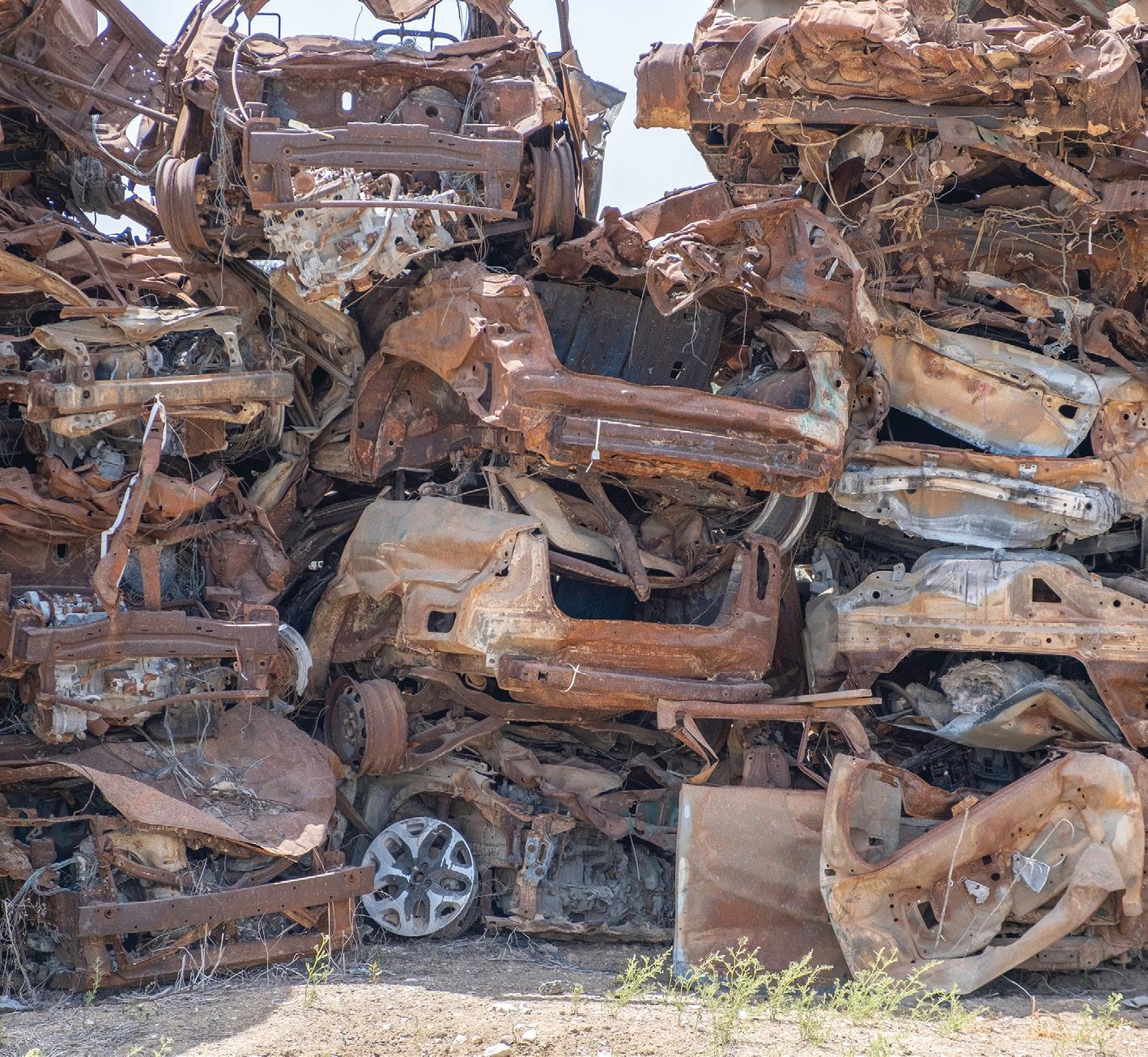
We cannot let Oct. 7 slide into the past and be forgotten. The survivors need to know we remember.
the weapons room, trying to repulse the attack. Are these children going to be able to play there again? Too soon to know.
As we were standing there, Guy pointed out a man walking towards us. He’s the grandfather of two orphans from the kibbutz. Another heart-wrenching situation that most people don’t think about. Who is raising the orphans from the Otef? Who gets custody? Older children can choose, but not all are old enough. Tough questions in an already painful reality.
After nearly three hours of immersion into the Kfar Aza of Oct. 7 and beyond, we hugged Guy and continued our tour of the Otef. We drove the 15 minutes to the “Car Cemetery” in Moshav Tekuma and then to the Nova memorial site. At the Car Cemetery, we lit a candle near the ambulance—the one our friend Alina and 17 others had been
hiding in and under until it was hit with Hamas grenades and RPGs. At the Nova, we found the individual memorials for our friends and lit candles there, too.
Lighting candles, visiting the sites— this is how I heal. Each of us must find what helps. It might be easier for an individual than for a community.
“We cannot even begin the healing process until everyone is home,” Guy said that day. Kfar Aza is struggling. They lost 64 kibbutz members; 19 were kidnapped to Gaza. Tragically, two were accidentally killed by fire from the IDF and the rest were released. The numbers still do not compute.
Thank G-d, the hostages are home now. And the war is over. Hopefully. But what happened on Oct. 7 will never end. We cannot ever completely move on. We will continue to visit the Nova, the Car
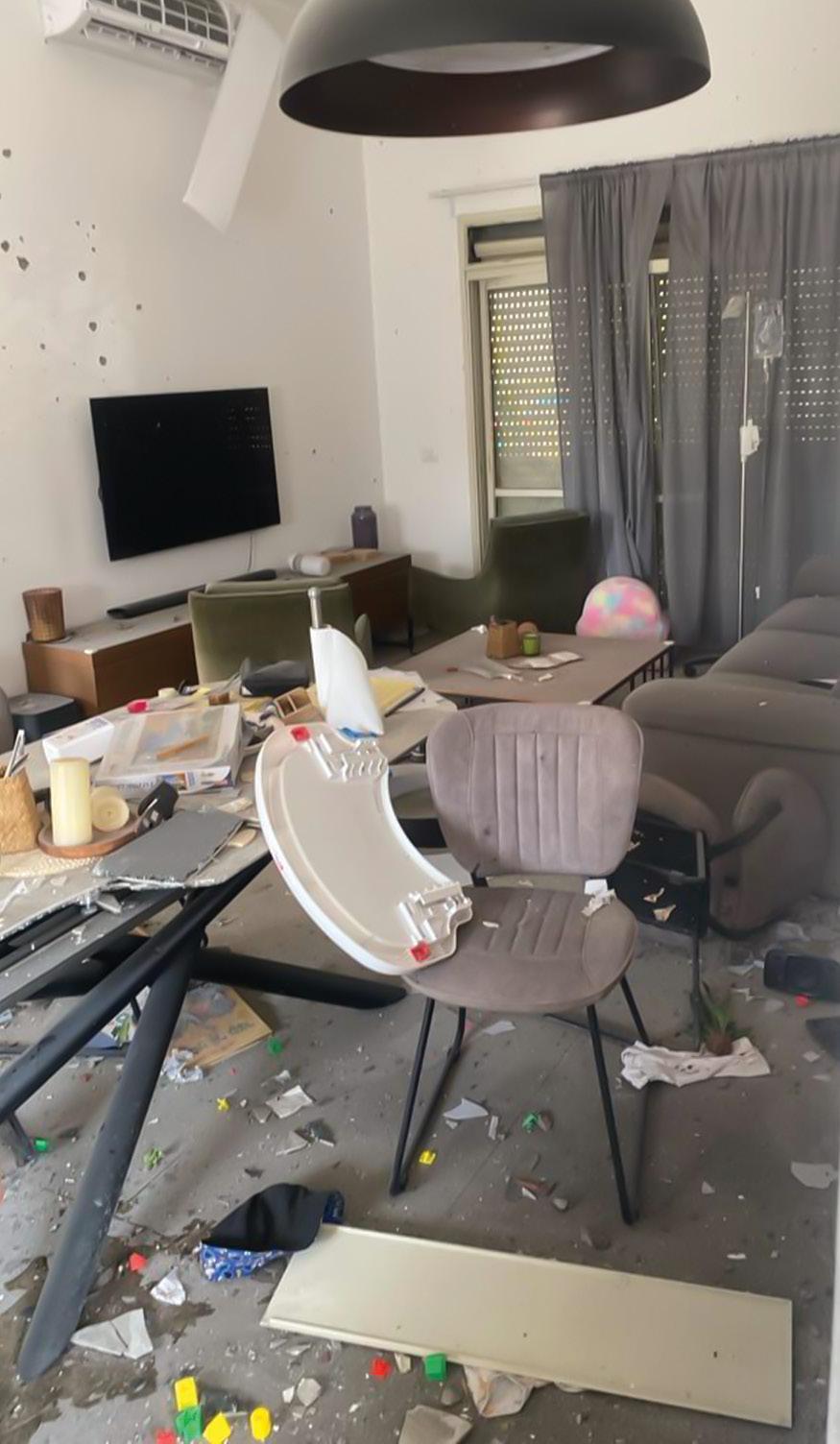
Cemetery, and memorials around the country. We cannot let Oct. 7 slide into the past and be forgotten. The survivors, like Guy and his family, the Berman brothers, and the families of the victims, need to know we remember. That we know what they’ve suffered.
Right now, Guy is keeping an eye on the reconstruction, but it’s no longer their home. It’s the remains of their house. They will return to Kfar Aza but not to that house where terrorists rummaged through their refrigerator, helping themselves to their food, putting their feet up on their coffee table, perhaps, lounging on their couch with their weapons that just murdered their friends or relaxing on their bed. Their presence is suffocating. Who could return to such a house?
Now a family of five, they will create a new home somewhere else on the kibbutz. They will continue to tell their story and heal in the process. And for
Americans far from the Otef, listening to them is an act of solidarity, a way to honor the lives lost and the families shattered. And it builds a mutual resilience that endures. In Guy’s words, “Am Yisrael Chai!” A
As survivors of Oct. 7, Guy and Ofri are committed to bearing witness and helping others understand the reality of that day. If your synagogue, school or organization would like to invite them for a speaking engagement in the U.S., please reach out for more information. Their story is one that must be heard. And telling it helps them heal as well. Please contact me at gkaspi@gmail.com and I will relay to Guy and Ofri.
Galia Miller Sprung moved to Israel from Palm Springs, California in 1970 to become a pioneer farmer and was a founding member of a moshav in the Jordan Rift Valley. Today she is a retired high school teacher, a writer and editor. She lives with her husband in Tzufim.




BY MICAH SIVA
With Thanksgiving just around the corner, it’s time to re-think the green bean casserole. Most green bean casseroles are mushy, bland, rich and never the first to go. Drawing inspiration from my favorite ingredient, tahini, I wanted to reimagine the green beans on your Thanksgiving table into something fresh, nutty, garlicky and something you’ll want to make all year round. Green beans are cooked with aromatic garlic, bright lemon zest and sweet shallots before being topped with a rich, dairy-free tahini sauce and fried onions. Your Thanksgiving guests will love it!
SERVES 6
INGREDIENTS:
• 2 lbs green beans, trimmed
• 3 tablespoons extra virgin olive oil
• 1 shallot, thinly sliced
• 2 cloves garlic, minced
• 2 teaspoons sesame seeds
• 1 teaspoon kosher salt, divided
• 1/2 teaspoon lemon zest
• 1/2 cup water
• 3 tablespoons fried onions (I use French’s)
Tahini Sauce:
• 1/3 cup tahini
• 1/2 cup water
• 1 teaspoon maple syrup
PREPARATION:
1. In a large skillet over high heat, add olive oil and green beans, cooking for 5 minutes until the beans turn bright green and begin to char. Add the shallot, and cook for an additional 7 minutes until the shallot has softened.
2. Add the minced garlic, sesame seeds, kosher salt, lemon zest, and water. Cook until the water has fully evaporated and beans reach desired doneness.
3. While the beans are cooking, combine the tahini, water, and maple syrup in a bowl, whisking until smooth.
4. Transfer the cooked beans to a serving dish and drizzle with the tahini dressing. Garnish with the fried onions. Serve warm.
BY EILEEN SONDAK
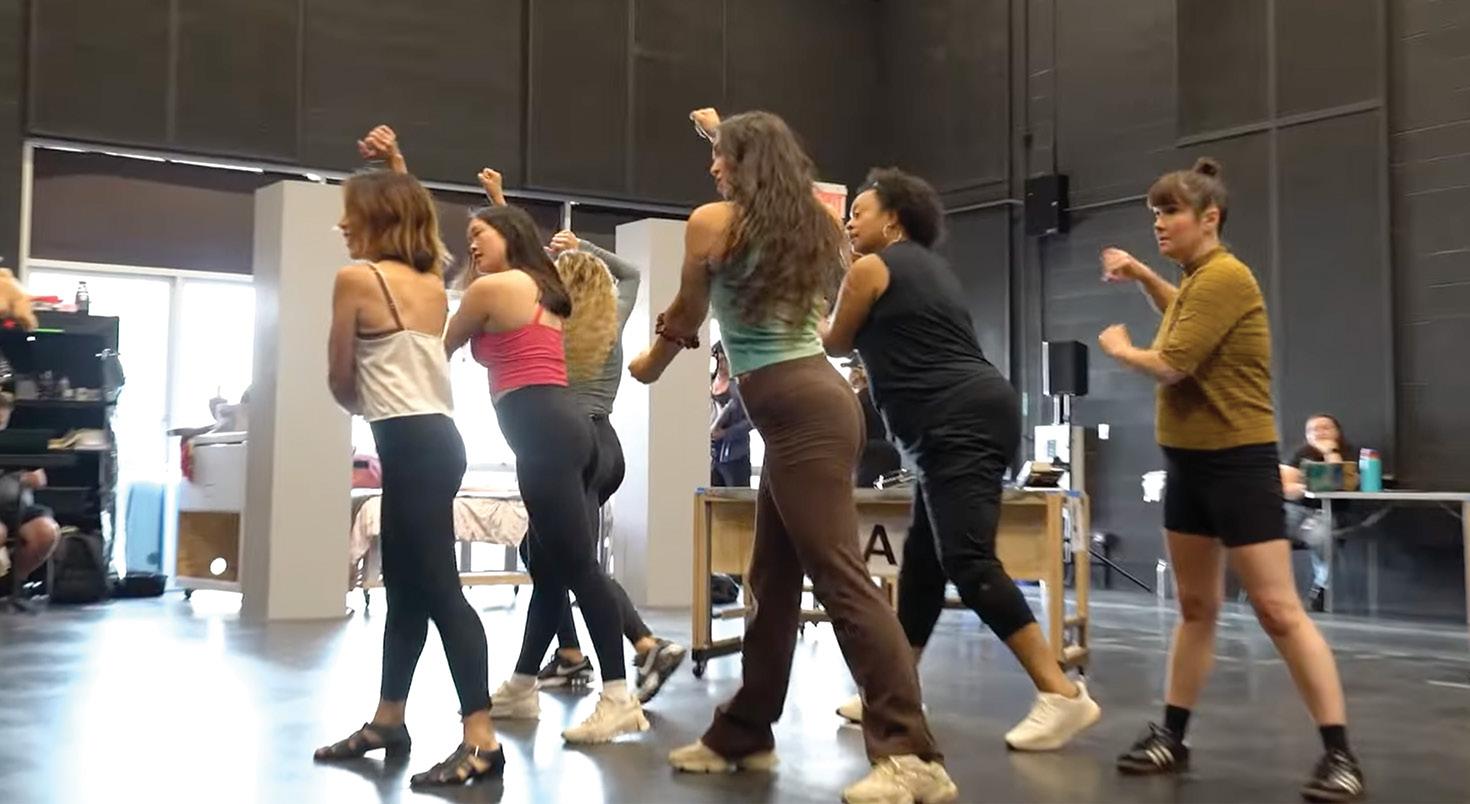
lambsplayers.org
Lamb’s Players Theatre is bringing George Bernard Shaw’s masterpiece, “Arms and the Man,” back to local audiences. The laugh-packed storyline focuses on a war weary soldier who hides out in the bedroom of a beautiful young woman. The results are witty and highly amusing, so don’t miss this production, which runs through Nov. 16
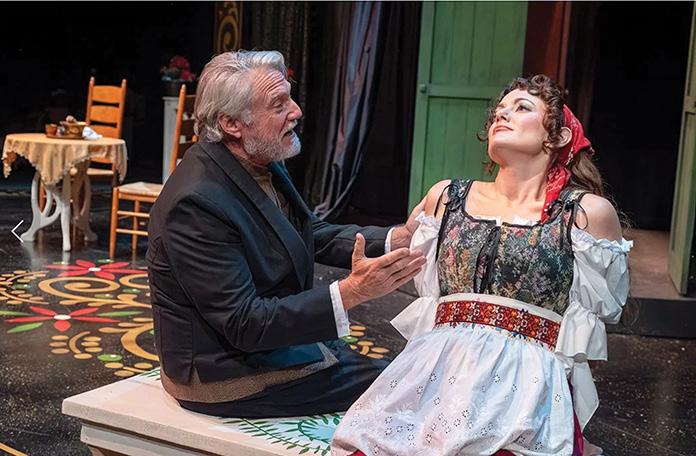
northcoastrep.org
North Coast Repertory Theatre is offering “Eisenhower: This Piece of Ground,” a San Diego premiere featuring John Rubenstein as Eisenhower, in a stunning performance. The powerful show will remain at NCRT through Nov. 23.
newvillagearts.org
New Village Arts is bringing the groundbreaking rock musical “Rent,” Jonathan Larson’s Tony Awardwinning show, to local audiences through Dec. 24
lajollaplayhouse.org
La Jolla Playhouse’s Mandell Weiss Theatre is showcasing “Working Girl,” a new musical based on the popular film. The show is razor sharp and hilariously funny as it brings to life a secretary with big dreams. With a fresh book and new score by Cyndi Lauper, “Working Girl” promises to deliver an exhilarating theatrical experience. The show is directed by the Playhouse’s own Christopher Ashley. You have until Dec. 7 to check it out.
theoldglobe.org
The Old Globe is starting its holiday celebrations early with “How the Grinch Stole Christmas” taking over the Main Stage Nov. 5. This beloved Dr. Seuss classic will continue to delight the small fry set through Dec. 31.
Beginning Nov. 21, the Globe’s White Stage is featuring another Yuletide favorite. “Big San Diego Christmas Show” throws the spotlight on Ebenezer Scrooge in an adaptation of the Dickens classic directed and co-authored by Gordon Greenberg. The classic with a twist will entertain audiences through Dec. 28.

mcasd.org
The Museum of Contemporary Art has “Fast Cars and Open Roads: Pop Artists Capture a Cultural Era, A Decade of Pop Prints and Multiples 1962–1972, The Frank Mitzel Collection” from Nov. 20 through May 25, 2026
The museum has another stellar exhibition to show off — “Alex Katz: Theatre and Dance,” a comprehensive and magnificent museum presentation of Katz’s work with the performing arts. The exhibition demonstrates the way this talented artist’s work has been reflected across the full spectrum of dance and theater productions.The exhibition will stay on in La Jolla through Jan. 4, 2026
theconrad.org
The La Jolla Music Society will start the month off on Nov. 7 with a performance by Mariza at Balboa Theatre, followed by Ballet Preljoca which dances into the Civic Theatre on Nov. 9. Clarinetist Andreas Ollensamer, cellist Kian Sultani and pianist Allisio Bix perform on Nov. 13, and Disney’s Moana Live-to-Film Concert is due on Nov. 14. Raphael Feuillatre will deliver a guitar recital on Nov. 16, and Yuliana Anduva will do some keyboard gymnastics on Nov. 20
broadwaysd.com
Broadway San Diego has two new offerings this month. “Dungeons and Dragons: The Twenty-Sided Tavern,” a global phenomenon, is headed to Balboa Theatre Nov. 18–23. This interactive fantasy is a blend of theater, gaming and storytelling where you battle to save the world.
“Mannheim Steamroller Christmas,” rolling into the Civic Theatre Nov. 21‑22, is the ultimate holiday tradition with its eye-popping multi-media effects and distinctive orchestral sound.
cygnettheatre.com
Cygnet Theatre’s annual telling of “A Christmas Carol” is waiting in the wings for a Nov. 26 opening This year, to celebrate its 10th year in production, Cygnet has added a new twist to the old chestnut with a refreshed script, a larger cast, and a generous dose of magic. The show will remain at The Joan through Dec. 28
by Marnie Macauley marniemacauley@gmail.com
Afew years ago, I found myself at a Vegas fundraiser, the kind where every third woman is B&B (Botoxed and Bosomy), and every visiting male is dreaming in crimson feathers and G-strings. To be fair, there were also the “toney” types.
You know them. Perfectly coiffed, in “The Uniform”: black dress, seed pearls, permanent lashes and IQs high enough to name-drop their last CNBC segment.
The room was packed with VIPs, some single. Did the men hover around the Bubbles and Bangles? Sure. For a minute. Then something weird happened.
Mid-swing, I spotted a huddle of men. Curious, I poked my way in. The magnet? A tiny, brainy, moderately attractive 38-year-old marketing director I’ll call Eve. She held court in a papaya jumpsuit and killer boots. Natural redhead (unlike some of us), waves casually circling her neck, no extensions, no apologies. What was it about this woman?
I remembered: our most charismatic stars aren’t bombshells. They’re Bettes, Barbras, Brandos, De Niros — intriguing, unforgettable. Charisma isn’t about perfection. It’s about presence, power and punch. After years of counseling, research (and eavesdropping), I’ve found seven traits that, when combined, render you irresistible.
Strategy 1:
Be originally, authentically you. One universal kvetch: “He was dull. A total bore.” Gen Z doesn’t need company to be bored—they’ve mastered it solo. Boring isn’t charismatic. Neither is oversharing or under-engaging.
Charisma lives in the iconoclast. Instead of blending in, lean into your quirks. Humor and wit? Always trending. Got a weird story? Use it. (Remember when you pretended to ski, launched down Suicide Mountain, and survived thanks to a fellow liar who broke your fall?)
Are you playful? A little mischief goes a long way. Playfulness signals confidence. It breaks tension. It invites intimacy. And it makes you the person people want to be around.
The trick: find the originality in your life. If you’re stuck, invite friends over for lattes and a list. And be unapologetic. Charisma doesn’t beg. It doesn’t shrink. It doesn’t ask for permission. The most compelling people own their space, their story, and their contradictions. They’re not trying to be liked. They’re trying to be real. And they’re sincere. That’s what makes them magnetic.
Strategy 2:
Be powerful/stand for something. Sad, wimped-out spectators radiate weakness. Charismatic people beam: “I’ve got this.” Confidence, competence, influence—even in silence.
Know your strong suits. Own them. Market them. The most magnetic humans don’t just tolerate their weird— they monetize it. They beam their selfhood like a satellite. That’s raw power.
Be mission-driven. The most magnetic people don’t need big personalities, even the quiet ones radiate purpose. They stand for something. They care about something. They’re going somewhere and they invite you along.
Whether it’s disrupting the patriarchy, making the best damn latkes in Brooklyn, or keeping an active journal of their wit, their purpose is irresistible.
Strategy 3:
Be present. “Hello? Is anybody home?” Ever talk to someone who’s mentally doomscrolling while you speak?
Charismatic people are here. They listen. They notice.
Charisma isn’t just sparkle, it’s signal. The most magnetic people know how to read a room, mirror a mood, and drop a truth bomb with perfect timing. They don’t just talk. They connect.
Whether it’s a wink, a well-placed pause, or a “me too” that lands like a hug, emotional fluency makes you unforgettable. Charismatic people ask questions that matter. They’re not just waiting for their turn to talk. They’re genuinely interested and it shows.
Curiosity is sexy. It’s flattering. It’s rare. And it’s the fastest way to make someone feel special.
Most effective? Noticing. Once you’re in radar mode, you’ll spot what someone’s doing, reading—even thinking. Then reflect it back. If he’s got pecs like melon balls, or she’s reading “Atlas Shrugged,” say it. Call it. Celebrate it.
There’s nothing more enchanting than someone who has the genius to notice your genius.
Strategy 4: Be surprising. This requires risk. Confidence. Originality.
Years ago, I was at a favorite restaurant. Hiding in a corner of the bar was legendary songwriter Stephen Sondheim. The barkeep warned: Mr. Famous hated being bothered.
When he moved toward me to pay his bill, I whispered: “Thank you.” He paused. “What for?” I mentioned one of his less famous songs—my favorite—and added that his lyrics “touched my heart.” Then I left to meet friends upstairs.
When I returned, the barkeep shrieked: “Where the heck were you?! He waited around for a half hour!”
Surprise makes you a standout.
Try these: Spotlight their superpower: “You know what you do better than anyone I’ve met?” Recall a detail they forgot they told you. Ask a question no one else does.
Strategy 5: Be charming. Charm isn’t a single trait, it’s a cocktail. Start with warmth. Ever meet someone who brings in the north wind or worse, a blizzard? You don’t need to resemble a happy face, but radiate the warmth we associate with puppies and babies. You’re glad to be there. Show it.
Charm, especially in those of us over voting age, is one part ‘welcoming,’ one part ‘mild flirtation or appreciation,’ one part vulnerability, and one part grace. Empathy is a plus.
The most charming people I know are low-maintenance, laugh easily, display panache, and project comfort with life and with those around them. They make others feel better for having made the trip.
Remember: the biggest fear most people have is rejection. A genuine air of friendliness is a more potent aphrodisiac than a vat of oysters or Viagra.
Strategy 6: Bring energy. I don’t mean whizzing into the room like Elmer Fudd on a triple latte. I mean a vibe that’s alive and vital, with a pulse that’s strong. A lust for living.
Energy signals health, optimism and fun. You’ve seen it. A single person walks in and the whole room lifts. That’s charisma in motion.
On the flip side? One spoiler can knock out a glorious fête. Don’t be the pitiful apple.
Strategy 7: Look fetching. Dress for impact, not approval. Eve didn’t just show up, she showed out in papaya and boots while everyone else played it safe in black.
Forget trends. Wear what flatters, what pops, what tells the world: “I’ve got style, and it’s mine.”
Colors that work. Cuts that flatter. Shoes that shine. Accessories that speak your language. Style isn’t about blending in, it’s about standing out.
Charisma isn’t a costume, it’s a vibe. It’s the pulse of someone who walks their own walk, takes risks, and radiates sincerity, excitement and heart. That kind of magic? It starts inside you.


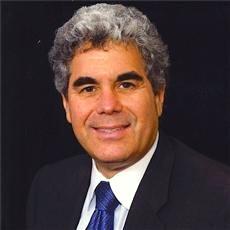


Larry M. Katz

3070 Racetrack View Drive Del Mar, CA 92014
858.461.0115
lkatz@lkatzcpa.com www.lkatzcpa.com
Beautiful downtown Vista has a 2000 sq.ft fully equipped 5 operatory Dental Office for rent. The complete building is also available for purchase, which has a 1100 sq.ft. space which is presently rented and has a lease. Total building is 3100 sq.ft. It also includes a spacious patio.
For more information please call (760) 390-4171. Please leave a message if someone does not answer.


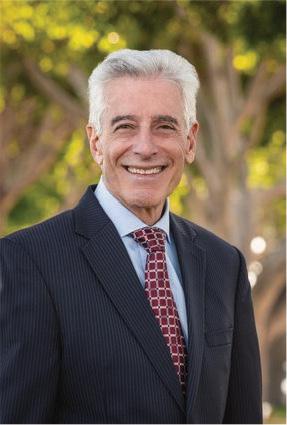












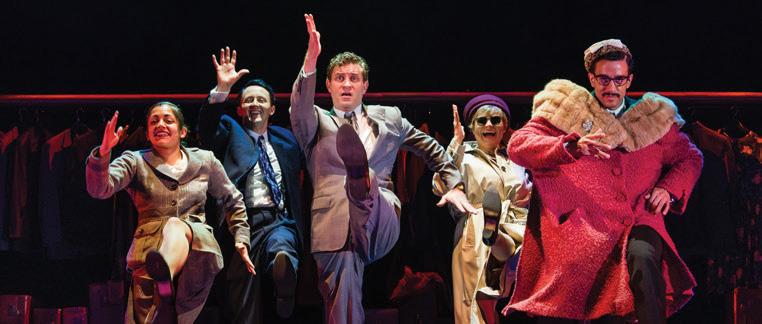
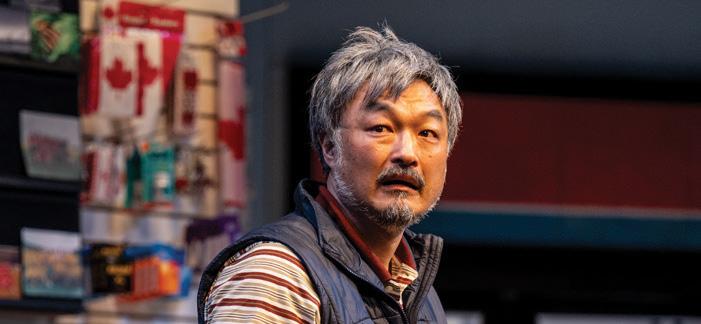








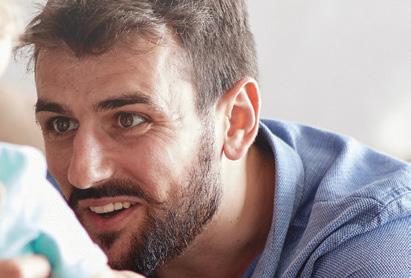








Give the gift of a fantastic night out at San Diego’s award-winning theatre. Gift certificates can be purchased for any dollar amount, are good for all










A delicious new play about the early life of the endlessly fascinating Julia Child.

Get ready for six vibrant, bold shows from some of the brightest American creative teams. This season features three world-premiere musicals and three extraordinary plays.

Subscribers enjoy the best seats and the lowest prices: save at least 20%, access priority seating, free parking, free exchanges, no fees and many perks all year. Join our email list to be the first to hear when Premium 6-Play subscriptions go on sale in Nov.
EXPLORE THE 2026/27 SEASON AND GET TICKETS AT LAJOLLAPLAYHOUSE.ORG




SUNDAY, DECEMBER 14, 2025
The Hanukkah celebration you know and love is BACK, now with even more to enjoy!

Join us for a day filled with all the favorites that make this celebration a community highlight: games, gelt, gifts, dreidels, snacks, crafts, music, and more. This year, choose your way in: The Festival of Lights Run or the Shalom Baby 25th Anniversary Bash.
The Festival of Lights Run is back after 40 years! Choose a 1mile family fun run or a sanctioned 5K or 10K, and celebrate Hanukkah in motion.


Celebrate 25 years of Shalom Baby with a joyful kosher brunch fundraiser packed with games and fun for the whole family to help us continue welcoming new families into San Diego’s Jewish community! PICK YOUR

